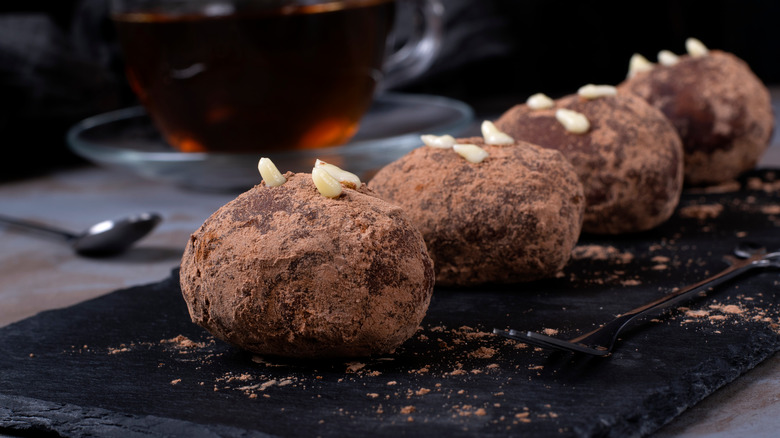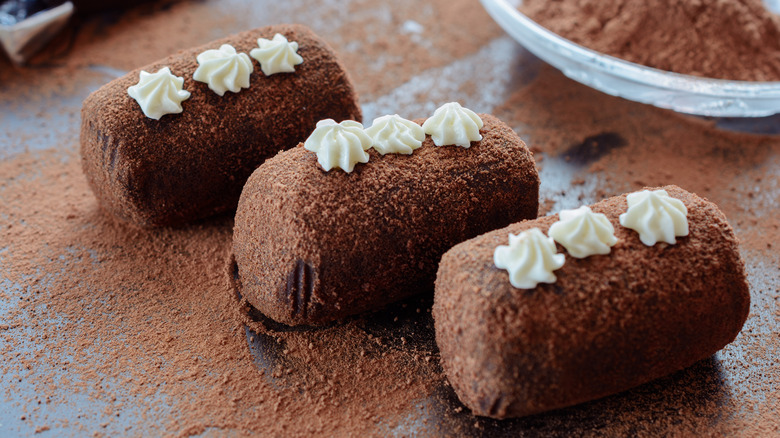The Soviet Chocolate 'Potato' You'll Want To Try
If you've ever traveled in Russia — or at least set foot inside a Russian bakery — then you know that this is a culture that's seriously into sweets. From delicate, multi-layered honey cake to moist apple sharlotka to the chocolate ganache-glazed custard cake called ptichye moloko (via Taste Atlas), Russian desserts range from uber-fancy creations that are legacies of the country's nearly 200-year empire (via Britannica) to rustic, homestyle confections.
One Russian dessert that belongs to the latter category is kartoshka, which literally translates to potato — but we're not talking about a savory spud in this case. According to Atlas Obscura, kartoshka cakes, which are common both in Russia and in Russian restaurants, cafeterias, and bakeries abroad, are essentially cake truffles made from cake and cookie scraps smushed together with softened butter, sweetened condensed milk, cocoa powder, and perhaps a slip of rum or cognac. Shaped to resemble a tuber and rolled in additional cocoa to represent a potato's dirty outside, kartoshka cakes were developed as a no-waste way to use up leftover pastry, instead of throwing it out.
Kartoshka is basically a Russian version of a cake truffle
Both cake truffles and rum balls are a way to use up leftover cake or cookie crumbs, typically those produced by Christmas baking, so that bakeries and home bakers alike don't have to waste any of their creations (via The Limited Times). Kartoshka cakes employ the same concept, according to blogger Yulia of That's What She Had. Growing up in Russia, Yulia remembers chowing down on the potato-shaped cakes, which she explains were developed by bakeries in the beginning of the 20th century, prior to the Russian Revolution, as a way to use up cakes that hadn't sold — refashioning them into an upcycled dessert that could stretch the unused pastry and still net the bakery some dough (pun intended). Yulia cites the memoirs of one Olga Shatunovskaya, who wrote, "Before the revolution in Baku, today's pastry cost a kopeck. The next day that same pastry would cost half a kopeck. On the third day, if it wasn't sold, all those pastries would be used to make kartoshka-cake."
Later, under the food shortages of the Soviet Union, kartoshkas took off as canteens and home cooks alike had to stretch every usable scrap of food. But these days, Yulia notes, kartoschka can be made with crumbled (packaged) cookies. Rolled in cocoa powder and decorated with a squiggle of white frosting, they look convincingly potato-like — much like the ice cream "baked potatoes" that are a hit in the spud-loving state of Idaho.

